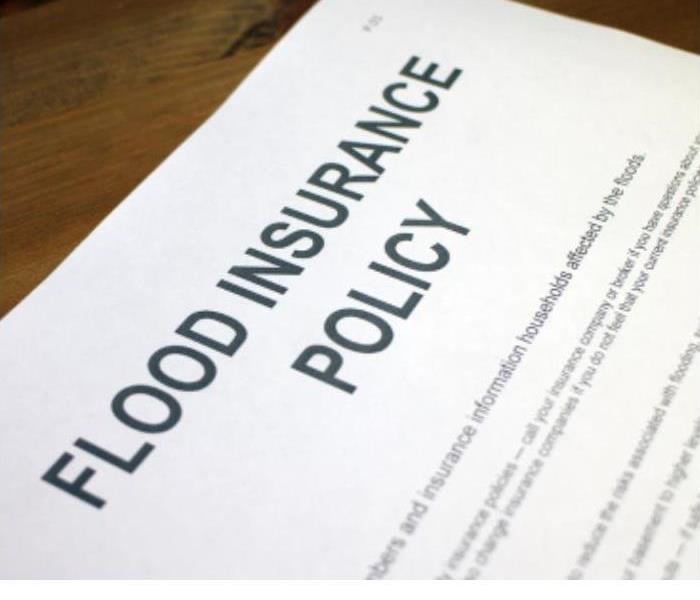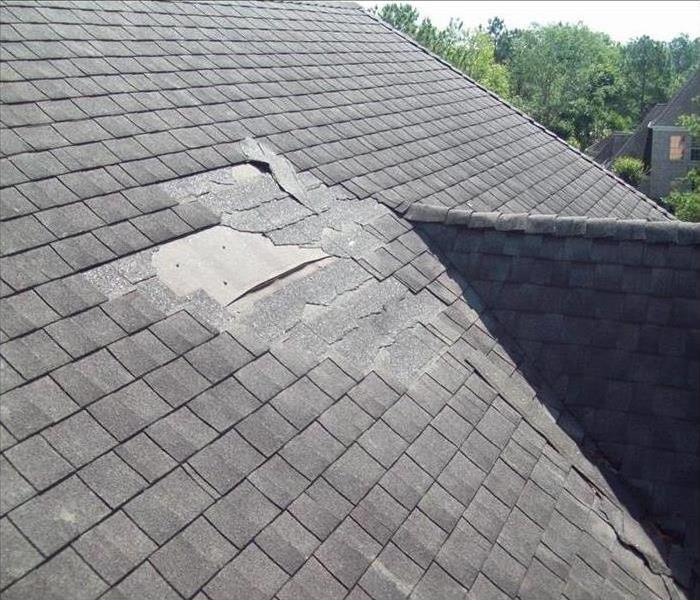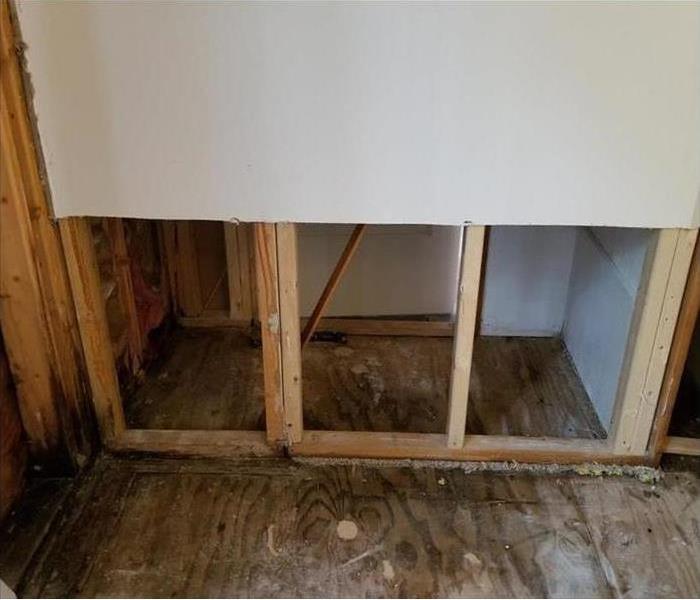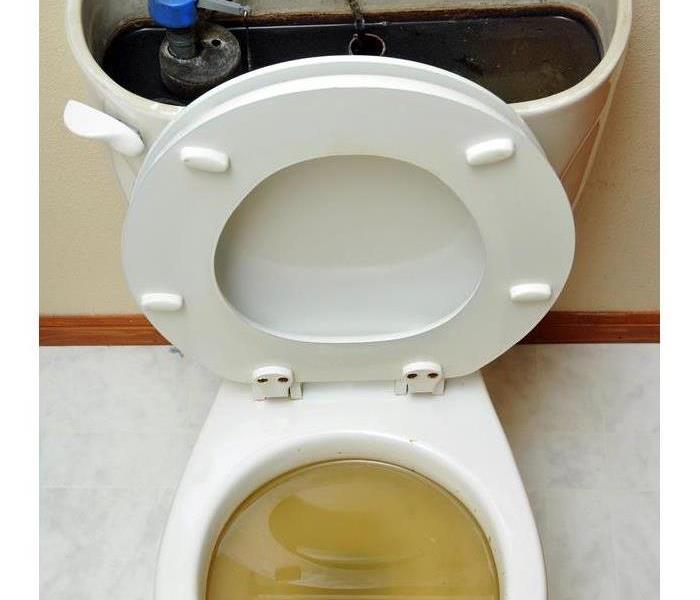Recent Storm Damage Posts
Does Insurance Cover Flood Cleanup?
11/7/2023 (Permalink)
 Learn more about homeowners insurance policies and flood cleanup coverage.
Learn more about homeowners insurance policies and flood cleanup coverage.
There is often a lot of confusion around what is and isn’t covered by a standard homeowners insurance policy. One of the biggest misunderstandings surrounds water and flood damage. Many people don’t know whether a water intrusion event is covered by their insurance company because they don’t know how it is classified.
In order to learn more about how insurance and flood cleanup coverage works, homeowners should keep reading this guide from SERVPRO of Weymouth, Hingham, and Quincy. Throughout their time offering flood cleanup services in Weymouth and the surrounding areas, they have had the opportunity to help countless customers with their insurance claims. Therefore, they can provide more information on how to get flood cleanup insurance coverage.
What is the Difference Between Water Damage and Flood Damage?
In general, most homeowners insurance policies do not cover flood damage. However, they may cover other water intrusion events. Therefore, it’s important that homeowners understand what types of events are considered water damage and what events would be classified as flood damage.
Water Damage
Most homeowners insurance policies classify an event as water damage if the source of the water came from within the home, such as a faulty appliance or plumbing issue. They may even cover a leaking roof or air conditioner. The one catch is that they may not cover water damage that could have been prevented.
Flood Damage
When it comes to classifying an event as flood damage, the source of the water usually has to be natural. In many cases, it’s caused by a natural disaster, such as a severe storm or hurricane.
Since the terms water damage and flood damage are often used interchangeably, it’s important that homeowners refer to their specific policy to see what coverage they have. If they still have questions, the best solution is to contact the insurance company for clarification.
Does Rain Damage Count as Flood Damage?
As mentioned, flooding from severe storms is often counted as flood damage, but rain damage can go either way, depending on whether or not the rain caused a flooding event. Rain damage from a leaking roof is typically classified as storm damage instead of a flood. Therefore, many insurance providers will cover these types of losses.
If, on the other hand, a storm was so severe that it caused a flash flood, the damage from that rain would be considered flood damage. This type of event would not be covered by a standard insurance policy. However, there are ways that homeowners can protect themselves in case of flooding events.
What is Flood Insurance?
Flood insurance is an entirely separate policy that is specifically used to cover buildings impacted by floodwater. It may cover some rainwater damage, but it is mostly used to provide coverage for losses caused by natural disasters. These can include hurricanes, overflown lakes, or ocean water.
In some areas where flooding is more common, homeowners may be required to take out a flood insurance policy while they pay off their mortgage. However, it can also be a sound investment for people who own their homes.
Flood insurance can be taken out to cover the building, personal property, or both. Examples of items covered by flood insurance include:
- Appliances
- The Home & Foundation
- Carpet
- Curtains
- Detached Garages
- Permanently Installed Features
What Isn’t Covered by Flood Insurance?
Though there are many things that are covered under the umbrella of flood insurance, there are still many items or expenses that aren’t covered by the standard flood insurance policy. In general, homeowners will not be reimbursed for additional living expenses or financial losses from interruptions to business.
Any mold, mildew, or moisture not caused by the flooding event will not be covered either. Many insurance companies also limit coverage to the building itself and the property inside. This means that they usually won’t cover fences, wells, hot tubs, swimming pools, septic systems, or other property features outside of the insured building.
These are just general guidelines, however. Homeowners can modify policies with riders to make sure their coverage fits their specific needs. Therefore, it’s important that homeowners contact their insurance company to find out more about their coverage.
Get Professional Assistance with Filing a Claim for a Flood Cleanup
Fortunately, homeowners don’t have to stress over filing a claim for their flood cleanup. Professional restoration companies like SERVPRO of Weymouth, Hingham, and Quincy can take care of the entire claims process.
To learn more about their full-service flood cleanup solutions, submit their online contact form. A helpful representative will then reach out to provide more information. Homeowners can also call the 24/7 emergency number for immediate flood damage assistance.
Top Tips for Effective Bad Weather Preparation
6/10/2023 (Permalink)
 Having flood insurance can help protect your property and get your property back to pre flooding conditions.
Having flood insurance can help protect your property and get your property back to pre flooding conditions.
As the saying goes, "hope for the best, but prepare for the worst." And when it comes to bad weather, this couldn't be more true. Whether it's a severe thunderstorm, tornado, hurricane, or blizzard, being prepared can make all the difference. In this blog post, we'll cover some important steps you can take to prepare yourself, your family, and your property for bad weather.
Create an Emergency Plan
The first step in preparing for bad weather is to create an emergency plan. This plan should include information such as evacuation routes, meeting places, and important contact numbers. Make sure that all members of your household are aware of the plan and have a copy of it. Additionally, consider practicing the plan with a mock emergency so that everyone is familiar with what to do in case of an actual emergency.
Stock Up on Supplies
In the event of bad weather, it's important to have enough supplies to last for at least 72 hours. This includes non-perishable food, water, first-aid supplies, and any necessary medications. You should also have a battery-powered radio, flashlights, and extra batteries on hand. Additionally, make sure that your cell phone is fully charged before the bad weather hits.
Secure Your Property
Bad weather can cause significant damage to your property, so it's important to take steps to secure it as much as possible. This can include trimming trees and removing any dead branches, securing loose items like patio furniture and trash cans, and reinforcing windows and doors. You may also want to consider investing in storm shutters or impact-resistant windows.
Stay Informed
Stay informed about the weather conditions by monitoring local news and weather reports. You can also sign up for alerts through your local emergency management agency or download a weather app that will send you alerts. If you're under a tornado watch or warning, take shelter immediately. If you're under a hurricane warning, follow any evacuation orders and make sure to take your emergency supplies with you.
Consider Flood Insurance
Flooding is a common occurrence during bad weather, and unfortunately, many homeowners' insurance policies do not cover flood damage. Consider purchasing a separate flood insurance policy to protect your property in the event of a flood. It's important to note that there is typically a 30-day waiting period before flood insurance coverage goes into effect, so don't wait until bad weather is on the horizon to purchase a policy.
In conclusion, preparing for bad weather is crucial for protecting yourself, your family, and your property. By creating an emergency plan, stocking up on supplies, securing your property, staying informed, and considering flood insurance, you can help ensure that you're ready for whatever Mother Nature may throw your way.
3 Ways To Mitigate Storm Damage at Your Business
8/22/2022 (Permalink)
 If damage, such as missing shingles, does occur it’s best to contact a local storm damage restoration service
If damage, such as missing shingles, does occur it’s best to contact a local storm damage restoration service
Three Tips To Protect Your Building From Storm Damage
If you're worried about a storm causing a roof leak at your Weymouth Landing, MA, place of business, then you may like to know that there are a number of ways to mitigate storm damage. Here are three things you can do to help protect your company.
1. Know the Weather
It’s a good idea to keep an eye on the weather reports for your area. This way you will know ahead of time if a storm is approaching and what its projected severity is. This will allow you to prepare if the storm has high winds or heavy rain that could cause a damaged roof or freezing temperatures that might lead to a pipe break.
2. Prepare Ahead of Time
When you know a storm is coming you can take steps to prevent a roof leak or other possible damages. If you are worried about a particular part of the property you can board or tarp over the space for additional protections. Trim back dead trees or overhanging branches to prevent wind from tearing them loose and throwing them into the building. Additionally, you may want to clean up loose landscaping or move any lawn decorations or loose signage inside until the storm has passed.
3. Act Quickly
If damage, such as missing shingles, does occur it’s best to contact a local storm damage restoration service as quickly as possible in order to help make repairs. Acting quickly can allow these repairs to be made before additional damage has a chance to happen. It’s also helpful to board or tarp over the damaged area to protect it until repairs can be completed.
Mitigating the possibility of roof leaks at your place of business is possible. Remember to keep an eye on the projected weather, prepare the property ahead of time, and act quickly to make repairs if damage does occur. Remember, if you have any questions a professional can help.
All About Flood Cuts
7/20/2022 (Permalink)
 Flood cut performed in a North Weymouth, MA company
Flood cut performed in a North Weymouth, MA company
Understanding What A Flood Cut Is
If you have recently had to speak with a flood cleanup company, you may have heard some terms you didn't understand. Dealing with flooding is a stressful time, but if you know what some of these terms mean, the cleanup process can seem a little easier. Here are the answers to three common questions about one of these terms you will hear when in search of a restoration company, flood cuts.
1. What Is a Flood Cut?
A flood cut is when the contractor has to cut and tear out the drywall from your property. This cut is 12-18 inches above where the flood damage stops on your wall. A flood cut is necessary to remove the drywall affected by flooding and address moisture problems in the wall.
2. Is It Always Necessary?
This cut is not always necessary. If the wall was damaged by clean water, the wall can generally be saved. It is a different story if your walls faced contamination by sewage or other types of dirty water. In these instances, the rule is generally anything that has been touched, must be removed.
3. Can My Walls Be Saved Without Removing the Drywall?
If your walls were affected by clean water and there is no insulation behind the drywall, you may be able to dry out the area using minimally invasive procedures. For instance, your contractor may be able to drill holes in the baseboard and insert airtight hoses. These hoses will pass dry air into the wall, drying out the studs and drywall without making a mess. However, if you have insulation, a flood cut will be necessary.
One way to relieve the stress of dealing with flooding is to understand what a flood cut is and if it will be necessary. However, trusting your commercial storm restoration professionals to take care of the situation is the best way to reduce headaches when cleaning your building in North Weymouth, MA.
What To Do and Not To Do After a Flood
5/27/2022 (Permalink)
 When we say that we are Faster To Any Size Disaster, we mean it! No matter what day or hour the loss strikes your home, our team is ready to serve you
When we say that we are Faster To Any Size Disaster, we mean it! No matter what day or hour the loss strikes your home, our team is ready to serve you
After A Flood, What Should You Do And What Shouldn't You Do
Your home should be a refuge and a place of comfort and protection. Unfortunately, issues can arise and bring flood water into your house. The severity of these events can vary. Still, if you face this type of emergency, there are things you need to do and avoid. Following proper guidelines can keep you safe and minimize the damage to your Quincy, MA, home.
1. Stop the Source and Turn off the Electricity
Various problems can lead to flooding in your home. If the source is a burst pipe, turn off the main water to the building. Shut off the electricity too, if it is safe to do so. Call a professional for help if you can't get to the breaker box without touching water.
2. Get Out of the Flooded Home
When you spot a flood and water damage in your Quincy, MA, house, evacuate and get to a safe place far away from the reach of any flood water. Make sure you account for everyone in your household upon evacuation.
3. Don't Neglect Calling for Help
Even small floods in your house can cause severe damage. Contact emergency authorities to assess potential hazards. Then call your insurance company. Depending on the type of flooding, your homeowners insurance may help pay for the costs.
4. Don't Try To Clean Everything Yourself
Cleaning up after a flood can be a significant task. You shouldn't have to feel overwhelmed. Contact a professional flood cleanup company for help. This seasoned team of specialists has the training and tools to thoroughly remove all water from the premises. The technicians will also be able to mitigate and clean up mold damage and other effects of flooding.
Flood water can have drastic impacts on your home and family. If you follow these guidelines, you can avoid crucial mistakes in response.
How To Clean Your Bathtub After a Sewage Backup
5/24/2022 (Permalink)
 You will likely need professional help if sewage has flooded the floor or if you don't feel comfortable handling raw sewage.
You will likely need professional help if sewage has flooded the floor or if you don't feel comfortable handling raw sewage.
How To Clean A Sewage Backup In A Bathtub
Your sewer line can become clogged and result in your bathtub backing up. Don't worry, though, because you can always get help cleaning up your tub after a sewer backup in Hingham, MA, even if you have trouble doing it yourself. Follow these steps for cleaning up.
1. Determine Who Should Clean Up
Ascertain whether you should clean up yourself or whether you need to enlist professional cleaning and restoration services. You will likely need professional help if sewage has flooded the floor or if you don't feel comfortable handling raw sewage. You can attempt cleanup yourself if the sewage has not flowed outside of the tub, but professional help can save you the hassle.
2. Gather Equipment
Gather your gear before starting cleanup so the process is as simple as possible. You will need bleach, some water, a mild detergent and either a scrub brush or a sponge. It can be helpful to use disposable rubber gloves as well.
3. Remove the Bathtub Backup Debris
Remove all solid debris from the tub and place it into the garbage instead of the toilet. Trying to flush all this matter can result in the toilet overflowing and flooding your bathroom, so be sure to refrain from doing so. Sewer backup debris might include toilet paper, feces, hair or other solid particles.
4. Scrub It Clean
Scrub the tub thoroughly using a one-to-one mix of water and bleach. Clean the tub again using a mild detergent such as dish soap and a sponge to remove sticky residue. If the residue is particularly stubborn, use a soft-bristled brush. Whether you use a brush or a sponge, be sure that it is designated for bathroom use, not kitchen use, and disinfect it with bleach afterward. Once the tub is scrubbed clean, rinse it out.
These are the basic steps for cleaning up your tub after a sewer backup. After all that hard work, you might want to treat yourself to a nice bath in your clean tub!
Emergency Kit Preparedness for Businesses
4/19/2022 (Permalink)
 Only after an injured person has been treated should you call a commercial storm restoration service for assessment and repairs.
Only after an injured person has been treated should you call a commercial storm restoration service for assessment and repairs.
Business Emergency Kit Preparation
Are you ready in case a storm causes your office's windows to shatter and someone gets cut? What if the roof caves in with someone working underneath? Having a first aid kit on hand is essential to making sure you are able to handle these as well as any other perilous scenarios. Use the following information to properly assemble and maintain one for your business.
Emergency Kit Inclusions
Prestocked kits are available for purchase, although some office managers elect to put one together on their own. If you choose to create one, make sure yours includes:
- Multiple size gauze pads
- Variously shaped bandages
- Medical tape
- Scissors
- Tweezers
- Splints
- Wound cleaners
This list does not include many other items that should be included. Perform further research on what belongs before deciding if your first aid kit is complete.
Emergency Kit Management
Diligent emergency kit management is absolutely essential. Pick a smart location where yours will be stored. Make it an obvious spot that isn't prone to experiencing extreme temperatures. Inform everyone where it will stay and provide instructions on easily accessing it during a crisis.
Check your kit in Hingham, MA, once a month for any missing items and swiftly replace anything that has been removed. Perform this chore on the first of each month and become proactive about what other components you think should be added.
Have an emergency medical plan in place.
Train staff on the best ways to respond to these stressful situations. Emphasize that injured workers remain a priority over fixing structural damage to your building. Only after a wounded individual has been treated should you call a commercial storm restoration service to conduct an assessment and make repairs.
It is impossible to thoroughly eliminate the peril that comes with extreme weather conditions. You can, however, protect yourself and others with a comprehensive, well-designed first aid kit. Make sure your workspace has a good one in place.
Commercial Property Insurance 101: What Is Covered After a Storm and What Isn't?
1/17/2022 (Permalink)
 If your business qualifies for coverage, your storm insurance often covers damage that occurs to your building, even the storm damage restoration.
If your business qualifies for coverage, your storm insurance often covers damage that occurs to your building, even the storm damage restoration.
What Is Covered And What Isn't In Commercial Property Insurance After A Storm?
As a business owner in Weymouth, MA, it is essential you understand your commercial property insurance and what emergencies it covers. While there are a lot of situations you are often covered for, there are specific types of disasters and circumstances that will probably not be included. It is important you consider your specific location, needs, and current insurance coverage when considering adding on new policies to your existing plan. While your storm insurance will vary slightly depending on your policy, here is an overview on what most commercial property insurance policies cover after a storm.
Is Storm Damage Covered?
In short, the answer is yes that insurance is typically included in your commercial property insurance policy. Since storm damage can cover a wide variety of emergency types, here are specific situations you can expect to be covered for:
- Blizzards
- Tornadoes
- Hurricanes
- Lightening
In the situations your business qualifies for coverage, your storm insurance often covers damage that occurs to your building, including the cost of storm damage restoration. Your policy may also cover the contents of the building, including equipment, furniture, and inventory, up to the predetermined dollar limit listed on your policy.
What Damage Isn’t Covered?
Under a standard policy, there are several situations where you will often not be covered. For instance, flood damage isn’t covered, and you will need to check if your policy covers windstorm and hail damage. While some policies automatically include this type of coverage, others require an additional plan. It is also important to note you will not be compensated from insurance for the time you are out of business unless you purchase business interruption coverage. Additionally, your plan will generally only cover damage caused by the storm and will not cover anything thought to be a cause of wear and tear.
An important step in preparing your business for an emergency is to find out what your specific commercial property insurance policy covers. While your storm insurance coverage includes many types of emergencies, not everything is automatically included.






 24/7 Emergency Service
24/7 Emergency Service







